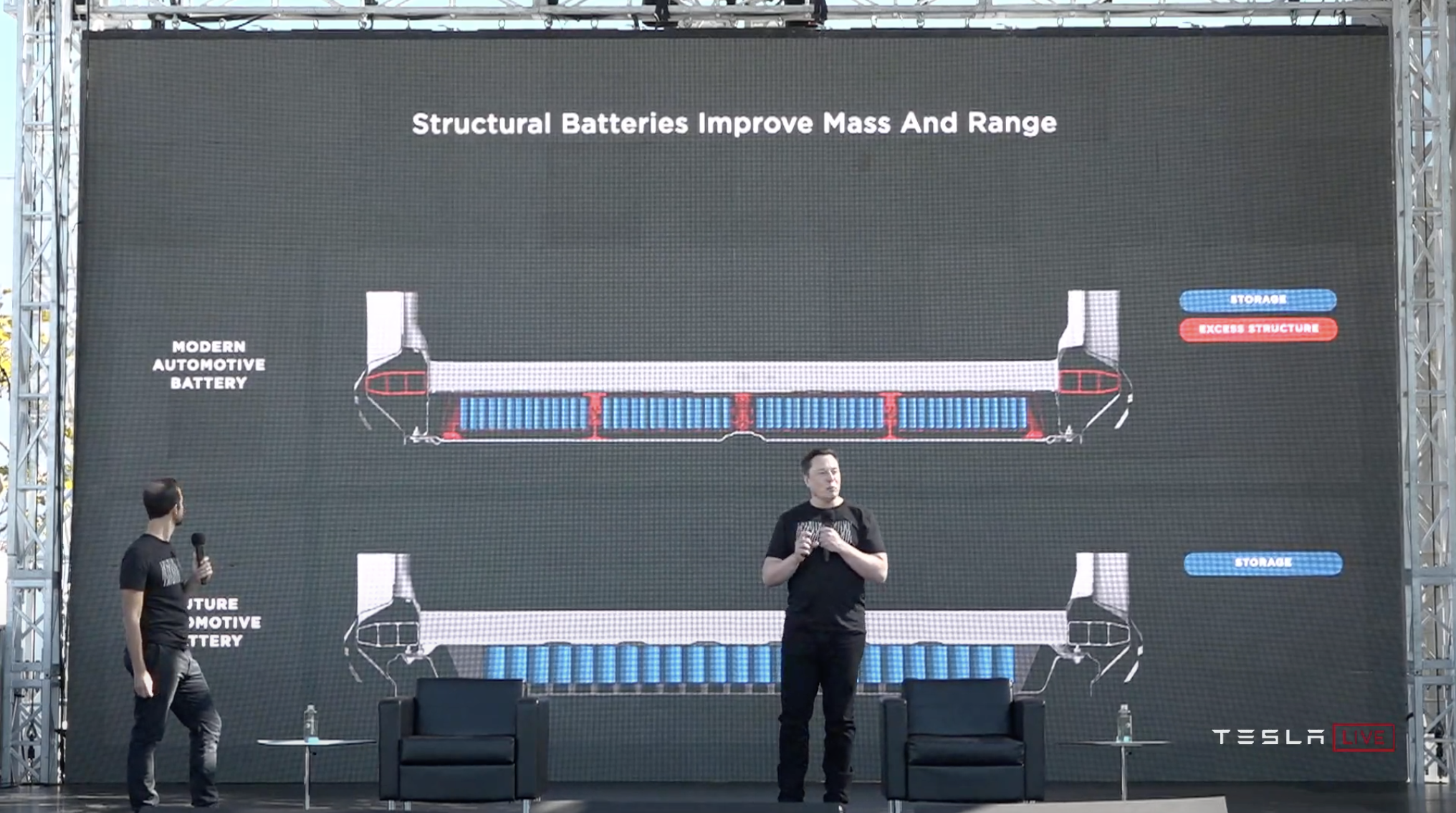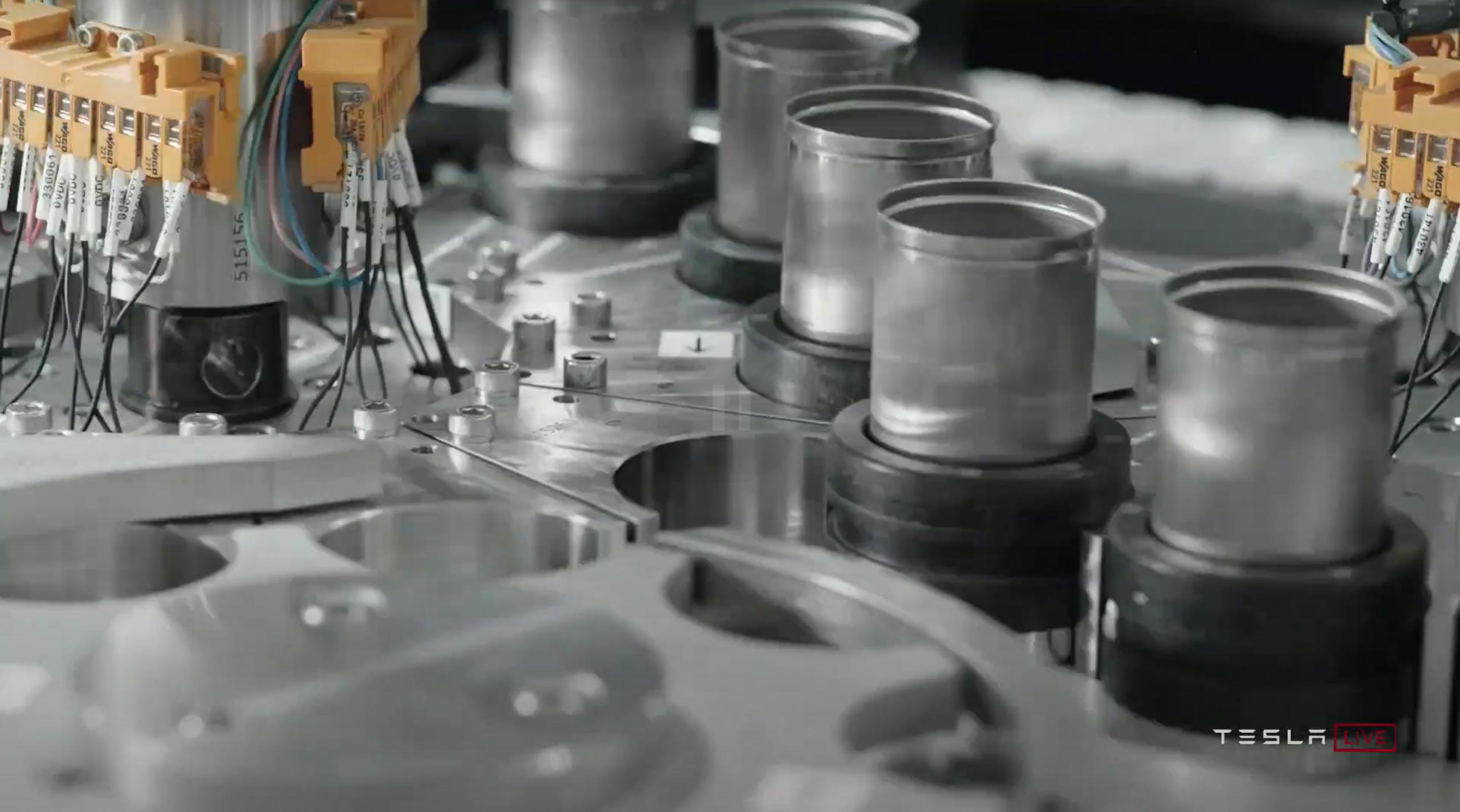Tesla has finally updated the public about the development of its 4680 battery cells, giving new details regarding the development and performance of the new chemistry and additional details about the structural battery pack and how it is performing in crash tests.
4680 Battery Cell
Unveiled at Tesla Battery Day in September 2020, the 4680 battery cell is set to be arguably the most crucial technological development in the company’s mission to accelerate the transition to sustainable energy. During the presentation last year, CEO Elon Musk and VP of Powertrain Drew Baglino outlined the capabilities of the new 4680 battery cell, highlighting five times the energy, a sixteen percent increase in range, six times the power, for less money. The event revealed Tesla’s lengthy research into the 46-millimeter tabless cell and how it performed most efficiently in charging. At the event, Musk said that Tesla is “starting to ramp up production at our pilot 10 GWh factory just around the corner.” Since then, updates have been hard to come by, but we know that companies are building prototypes of the cell and giving them to Tesla in attempts to win a huge contract.
Tesla debuts new 4680 battery cell: 500% more energy, 6X power, range increase
Testing and Efficiency
Tesla said that it has successfully proven the performance and lifetime of the new cell through rigorous testing processes. As of right now, the only thing that remains is ironing out the manufacturing processes of the cell, which continue to plague Tesla’s production output.
The company stated:
“We have successfully validated performance and lifetime of our 4680 cells produced at our Kato facility in California. We are nearing the end of manufacturing validation at Kato: field quality and yield are at viable levels, and our focus is now on improving the 10% of manufacturing processes that currently bottleneck production output. While substantial progress has been made, we still have work ahead of us before we can achieve volume production.”
The cell’s development is evidently coming along great, according to the automaker’s analysis. The cell is set to be utilized in the Model Y produced at Giga Texas and Giga Berlin. Both facilities are set to begin manufacturing the all-electric crossover later this year.
Manufacturing has always been one of the most complex riddles that automakers, Tesla included, need to solve to improve efficiency and accuracy. It is a never-ending battle, and finding new and more effective ways to produce and manufacture products accurately and with high quality becomes more complex, despite technological advances. The volume production of the 4680 cell is being held up by the final 10% of manufacturing processes that need to be figured out. However, with less than a year of knowing about the facility, Tesla has evidently made tremendous strides in the manufacturing efforts of the cell, and the company could see robust developments and improvements in production after these bottlenecks are solved.
Finally, Tesla also shed more light on the development of the 4680 structural battery pack. Tesla outlined details on this at its Battery Day event as well, stating that the battery pack would be a part of the vehicle’s increased strength and rigidity. It all came down to design.

Credit: Tesla
“The non-cell portion of the battery has negative mass,” Musk said. “We saved more mass in the rest of the vehicle than in the non-cell portion of the battery. So how do you really minimize the mass of the battery? Make it negative.”
The design increased structural rigidity and stiffness, preventing deformation in the event of a crash. However, testing needed to be performed, and Tesla is doing it in-house. The company stated:
“Internal crash testing of our structural pack architecture with a single-piece front casting has been successful.”
Tesla beat Wall Street estimates by posting a revenue of $11.958 billion, non-GAAP Earnings per Share of $1.45, profitability of $1.3 billion, and a free cash flow of $619 million.
Tesla will hold its Q2 2021 Earnings Call at 5:30 PM EST, 2:30 PM PST.











